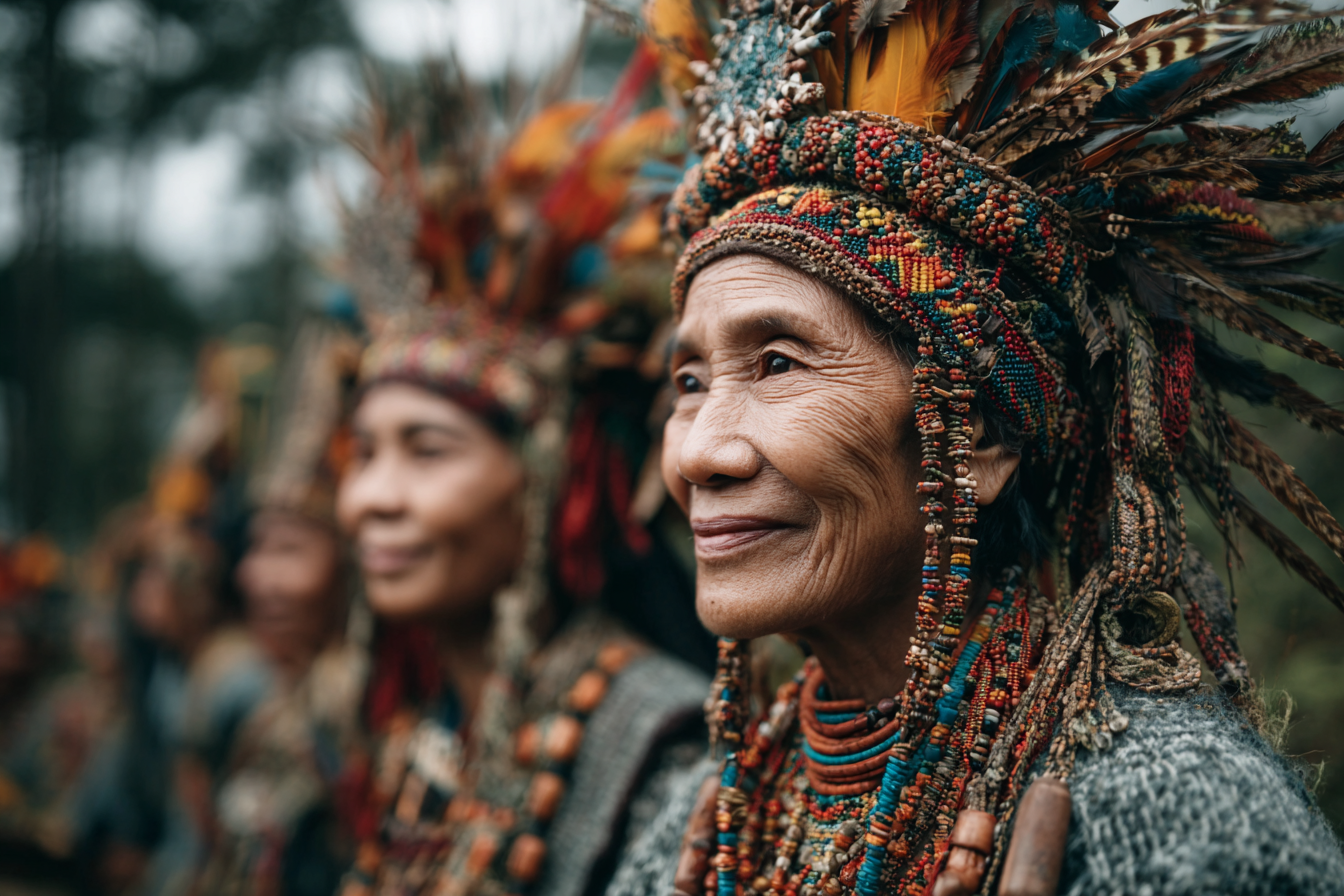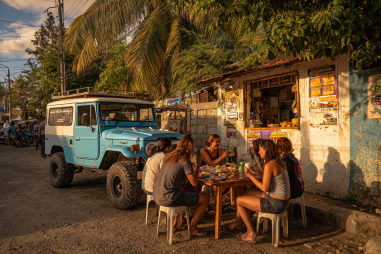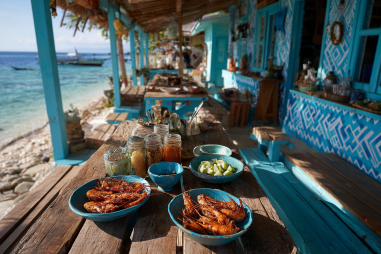Nestled in the mountainous province of Mountain Province in the Philippines, Sagada stands as a living testament to the rich and vibrant culture of the Igorot people. Far beyond its breathtaking landscapes and natural beauty, Sagada offers a window into a way of life that has been carefully preserved over centuries. Exploring the culture and traditions of Sagada provides travelers and enthusiasts a unique opportunity to connect with indigenous customs, rituals, arts, and community celebrations that continue to define its identity today.
Overview of the Igorot Community
The Igorot people, the indigenous inhabitants of Sagada and other areas in the Cordillera region, have a distinct cultural heritage that sets them apart from other ethnic groups in the Philippines. The term “Igorot” broadly refers to several ethnolinguistic groups inhabiting the mountainous terrains of Northern Luzon, known for their deep connection to the land, strong community ties, and preservation of age-old traditions. In Sagada, the Igorot community thrives with a lifestyle that harmoniously blends the natural environment with social structure.
Historically, the Igorot people are farmers, hunters, and artisans, with terraced rice fields that are a marvel of traditional engineering. They have developed social systems and customs rooted in respect for nature, ancestors, and community welfare. The Igorot value strong kinship bonds, oral traditions, and rituals that maintain harmony with their surroundings and preserve cultural continuity.
Traditional Practices and Rituals
One of the most compelling aspects of Sagada’s culture lies in its traditional practices and rituals. These customs are deeply spiritual and are closely tied to the Igorot people’s reverence for ancestors and the natural world. Ceremonies often involve chants, indigenous music, dance, and offerings to spirits believed to protect the community.
Important rites of passage such as weddings, harvest festivals, and funerals are conducted with strict adherence to tradition, involving community participation and symbolic acts. For example, the “cañao” is a ritual feast held for various occasions, where pigs and chickens are sacrificed, accompanied by chanting and dancing to honor the spirits and ensure blessings from the ancestors.
Hanging Coffins and Burial Customs
Perhaps the most iconic and intriguing tradition in Sagada is the practice of hanging coffins. This ancient burial custom, rarely found elsewhere in the Philippines, involves suspending wooden coffins along the cliffs of the limestone mountains or placing them inside caves. It is believed that elevating the deceased closer to the heavens helps their souls reach the afterlife faster.
This practice reflects the Igorot’s unique outlook on death and the afterlife, emphasizing respect and care for the departed. Before burial, elaborate rituals and offerings are conducted to ensure the smooth passage of the soul. The hanging coffins vary in size, and sometimes, smaller coffins are used for children.
Modern efforts have been made to protect these burial sites from environmental damage and tourism impact, highlighting the community’s desire to preserve this sacred tradition while educating visitors about its significance and cultural sensitivity.
Handicrafts and Indigenous Art
Artisans in Sagada produce exquisite handicrafts that showcase the Igorot’s artistry and connection to nature. Using locally sourced materials like wood, bamboo, rattan, and textiles, they create intricate woven fabrics, musical instruments, and decorated household items.
The weaving tradition is particularly prominent, with vibrant patterns and designs that symbolize cultural stories, identity, and status. These textiles are not just functional but serve as important cultural markers passed down through generations. Woodcarving is also a valued skill, especially in creating ritual objects, coffins, and decorative art.
By supporting local artisans and appreciating their work, visitors contribute to preserving and revitalizing these age-old crafts that reflect Sagada’s rich heritage.
Local Festivals and Celebrations
Festivals in Sagada are vibrant expressions of Igorot identity and community spirit. They provide an immersive experience where traditional music, dance, dress, and rituals come alive. Among the notable festivals is the annual “Sagada Festival,” a celebration that honors the culture, arts, and values of the Igorot people through performances, markets, and community interactions.
During these festivals, locals showcase their skills in folk dancing, share indigenous food, and conduct rituals that bless the community and its environment. Festivals are not only joyful occasions but also serve as opportunities to educate younger generations and visitors about Igorot traditions and lifestyle.
Cultural Sensitivity Tips for Visitors
Visiting Sagada offers a wonderful chance to experience indigenous culture, but it comes with the responsibility to respect local traditions and sensitivities. Here are some key tips for cultural sensitivity:
- Ask for Permission: Always seek consent before taking photos of people or sacred sites, especially the hanging coffins and burial grounds.
- Dress Respectfully: Wear modest clothing that respects local customs, especially when attending rituals or visiting indigenous communities.
- Respect Sacred Practices: Avoid disturbing ceremonies or participating unless invited. Observe quietly and appreciate the meaning behind the customs.
- Support Local Economy: Purchase artisanal products from local makers and engage with community guides to promote sustainable tourism.
- Minimize Environmental Impact: Stick to designated trails, dispose of trash properly, and follow guidelines to protect the natural and cultural heritage.
How Tourism Impacts Sagada Culture
Tourism has brought both opportunities and challenges to Sagada’s culture. On one hand, it has provided economic benefits and inspired greater recognition and preservation of indigenous traditions. Visitors’ interest often motivates locals to maintain their arts, crafts, and rituals, and tourism revenues support community development projects.
On the other hand, increased visitor traffic poses risks such as environmental degradation, cultural commodification, and loss of privacy for the local people. The commercialization of sacred rituals or sites can dilute their cultural significance. Balancing tourism growth while safeguarding cultural integrity requires mindful policies and community-driven management.
Supporting Local Culture Responsibly
For travelers who want to support Sagada’s culture responsibly, the key is to engage thoughtfully and respectfully. Here are some ways to do this:
- Choose Community-Based Tourism: Support tour operators and homestays managed by local Igorot families who prioritize cultural respect and sustainability.
- Learn from Locals: Participate in workshops or guided tours led by community members to gain genuine understanding and avoid misinformation.
- Buy Authentic Handicrafts: Purchase souvenirs directly from artisans to ensure fair compensation and encourage craft preservation.
- Promote Cultural Awareness: Share your positive experiences while emphasizing the importance of respect for local traditions.
- Contribute to Conservation Efforts: Participate in or donate to initiatives aimed at protecting Sagada’s natural and cultural heritage.
By traveling with sensitivity and intention, visitors can help keep the spirit of the Igorot culture alive for generations to come.
Exploring Sagada’s culture and traditions is more than a travel experience—it’s an enriching journey into a community’s heart and soul. From their ancient rituals and sacred burial sites to lively festivals and exquisite crafts, the Igorot people of Sagada offer a vibrant window into a resilient and evolving cultural heritage. With respect and appreciation, visitors can not only witness but also contribute to the preservation of this remarkable way of life.







